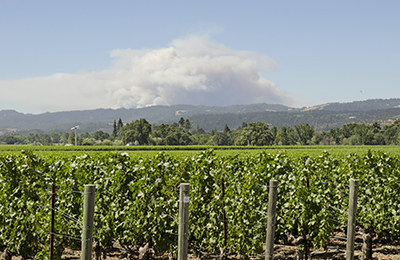 Even the record rainfall that doused much of California in October 2021 couldn’t quell fears of enduring drought and new wildfires, particularly in the southern part of the state. That’s certainly the case among insurance underwriters, who have become increasingly reluctant to approve property and casualty (P&C) coverage for individuals and businesses in Southern California, including those in the agriculture industry.
Even the record rainfall that doused much of California in October 2021 couldn’t quell fears of enduring drought and new wildfires, particularly in the southern part of the state. That’s certainly the case among insurance underwriters, who have become increasingly reluctant to approve property and casualty (P&C) coverage for individuals and businesses in Southern California, including those in the agriculture industry.
Farmers, in other words, are having a very hard time obtaining and renewing insurance policies.
From a distance, the underwriters’ reluctance makes sense. The droughts and wildfires that have plagued the West in recent years are common knowledge across the nation and beyond. It stands to reason that a couple of days of rain — even torrential rain — wouldn’t be enough to solve a years-old problem. Naturally, farm structures and crops would appear to be at heightened risk.
But a closer look at each individual farm’s P&C policy application — if the application provided a comprehensive view of the property and the applicant’s claim history — would likely reveal a more appealing scenario. Fire breaks around the property, for example, would show it to be less at risk than the farm’s zip code might suggest. A state-of-the-industry irrigation system would indicate the farm’s crops to be less vulnerable than those on a farm using outdated means of irrigation. An explanation of what a piece of DIY farm equipment does and how it works could ease the sort of uncertainty that makes underwriters uncomfortable.
California Insurance Commissioner Ricardo Lara said as much while discussing a proposal to have insurance companies take into consideration fire-prevention actions when rating a business’ risk.
“It’s critical that insurance reflects the real risk of wildfire losses, including the hard work consumers are doing to protect their properties,” Lara said, according to the Napa Valley Register. “With our agricultural businesses rolling up their sleeves, we need to see the same commitment from our insurance industry to long-term solutions.”
This is where partnership between farmer or vintner and insurance agent or broker is essential — regardless of the state in which your property is located. A comprehensive application, along with an experienced agriculture insurance professional, are what’s needed to inform an underwriter that your business is a good risk.
Unprecedented Challenges, State-of-the-Industry Innovation
People in the agriculture industry are known not only for rolling up their sleeves and doing hard work, as the California insurance commissioner noted, but also for their resourcefulness when it comes to solving problems and completing complex tasks.
In agriculture, there’s never a shortage of problems to solve nor tasks to complete, but the combination of drought, wildfires and a labor shortage exacerbated by the pandemic has made working the land more complicated than ever. Add the need for armed guards at properties where cannabis is grown and stored, and you have an unprecedented set of environmental, human and technological challenges for growers to navigate and underwriters to comprehend.
As the Washington Post reported in its April 2021 article “Farmers have more mouths to feed. Bring on the Robots.”:
“Labor costs, climate change and growing food demand are ushering in an era of machine modernization across the nation’s agricultural landscape. The situation prompted Church Brothers (Farms) to invest in several autonomous robots and drones in recent years. The company even spent a million dollars to create a broccoli harvesting contraption that works, but it requires more investment …”
And investments need protection. And that means insurance. And that brings us yet again to the need to inform the underwriters — something only an insurance professional with a deep knowledge of farming, harvesting and field labor is qualified to do.
Agriculture Tech and Cybersecurity
In a July 2021 interview on American Public Media’s “Marketplace,” Kansas State University agricultural economist Terry Griffin discussed farm equipment, the right-to-repair movement and his upbringing on an Arkansas farm in the 1980s.
“It’s a world of difference between the 1980s and today,” Griffin said. “Think about the cars you drive, especially the upper end of vehicles that may have OnStar. Farm equipment is no different. We’ve been pushing data from farm equipment to the cloud for the manufacturers’ use since about 2010.”
Uploading machine data to the cloud, utilizing drones and other automated machines, processing timesheets online — all create exposures cybercriminals are adept at exploiting, and breaches from ransomware and other forms of attack have risen dramatically during the COVID-19 pandemic. Yet many farms, vineyards and other agriculture businesses have been slow to see the need for cyber insurance.
Here’s an opportunity for those who operate farms and vineyards to become better informed.
To help those in agriculture and other industries protect themselves, Alera Group has created an in-depth guide to managing cyber risk: “Cyber Risk in a Post-COVID Landscape.” In it, you’ll find information on topics including:
- Recent trends and claims
- Cybersecurity plans and functions
- Resilience
- Risk management
- Insurance
- Claims
- Compliance
- Best practices
- Anticipated risks.
To obtain the whitepaper, click on the link below.




